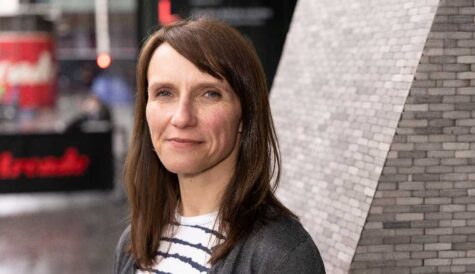Red hot channels in Asia
 Asian pay TV is growing at a fast clip with subscriber numbers on the rise and revenues from linear and new digital services growing. The numbers are not lost on the international media giants operating channels and services from the likes of A+E, BBC Worldwide, Discovery, Fox, Sony and Turner are all well established in the EPGs of the continent’s pay TV operators.
Asian pay TV is growing at a fast clip with subscriber numbers on the rise and revenues from linear and new digital services growing. The numbers are not lost on the international media giants operating channels and services from the likes of A+E, BBC Worldwide, Discovery, Fox, Sony and Turner are all well established in the EPGs of the continent’s pay TV operators.
While the data illustrates the opportunities, there are also challenges in running pay TV channels in Asia, not least piracy, which in the region means the theft of pay TV signals and under-reporting of subscriber numbers, impacting what channel operators get in affiliate fees. All of the international media groups are actively lobbying governments and relevant authorities in that respect, often through industry group CASBAA. Meanwhile, there are concrete steps being taken to mitigate the effects of illegal downloading, where getting the content to consumers quickly can negate the urge to access a torrent site.
The push to as close as possible to day-and-date with the original TX of an international programme can be seen most clearly with highly serialised drama series. The underlying reasons to drive for speedy local transmission also apply to entertainment shows, especially – in a hyper connected world – if the audience helps decide the outcome of a show, even if the local viewers can’t influence that decision.
There’s nothing more irritating than seeing people on a show saying ‘Merry Christmas’ when it’s February – Jonas Engwall, RTL CBS Entertainment
“The ability to bring great and relevant premium content to the audience closer to the US broadcast is becoming more and more a necessity for channels to fulfil,” says RTL CBS Asia Entertainment CEO Jonas Engwall. “We see this more evidently in reality programming that involves audience participation. The audience in Asia may not have a hand in determining winners but they do have a share of voice in social media that elevates the buzz for particular shows.”
RTL CBS is bringing Entertainment Tonight to its Asian channels within 24 hours of its airing in the US. “Entertainment news needs to travel fast – a celebrity might get married on the Monday and divorced on the Thursday,” Engwall says. “And there’s nothing more irritating than seeing people on a show saying ‘Merry Christmas’ when it’s February,” he adds.
 Fox International Channels has local rights to The Walking Dead, the biggest US cable show ever. It puts it on its top tier Fox Movies Premium channel in Hong Kong and Southeast Asia and is running episodes of the zombie drama as close as twelve hours after its US transmission on AMC. That is setting a template for FIC. “Moving forward we will be launching even more shows as close to the original global premiere as possible and not just for US entertainment content but also for Korean content on Channel M, our K-entertainment and lifestyle channel, and factual content on National Geographic Channel,” says Joon Lee, executive VP, content and communications, Asia Pacific and Middle East Fox International Channels Asia (pictured above).
Fox International Channels has local rights to The Walking Dead, the biggest US cable show ever. It puts it on its top tier Fox Movies Premium channel in Hong Kong and Southeast Asia and is running episodes of the zombie drama as close as twelve hours after its US transmission on AMC. That is setting a template for FIC. “Moving forward we will be launching even more shows as close to the original global premiere as possible and not just for US entertainment content but also for Korean content on Channel M, our K-entertainment and lifestyle channel, and factual content on National Geographic Channel,” says Joon Lee, executive VP, content and communications, Asia Pacific and Middle East Fox International Channels Asia (pictured above).
“In addition to helping curb piracy, we feel launching shows day-and-date whenever we can is the minimum standard of service we can offer. Why should viewers in our region wait weeks or even months to watch a hit show after the US or the show’s country of origin?”
 BBC Worldwide endeavours to get The Graham Norton Show out within two weeks of its airing on the BBC to ensure that the guests’ contribution – usually involving plugging a current book, film or song – remain relevant.
BBC Worldwide endeavours to get The Graham Norton Show out within two weeks of its airing on the BBC to ensure that the guests’ contribution – usually involving plugging a current book, film or song – remain relevant.
“Services like TV Everywhere and the growth personal devices and tablets have changed the way we all consume media in Asia,” says Mark Whitehead, senior VP and general manager for BBC Worldwide south-east Asia and the commercial arm of the UK public broadcaster’s channels lead for Asia. It is, however, selective on which shows it strives air close to international air dates and says it makes decisions based on audience demand, timeliness and relevant live events.
There have been several cross-channel live events on the BBC channels. As part of a ‘London Calling’ season last year key events surrounding the British Queen’s Diamond Jubilee were shown on BBC Knowledge and BBC Entertainment. The coverage propelled BBC Knowledge to the top spot among (non-kids) English-language channels in Singapore. There has also been coverage of the British Glastonbury music festival shown one hour after its UK telecast. There was also a simulcast of the fiftieth anniversary episode Doctor Who on BBC Entertainment this November (above left).
BBC Worldwide closed BBC Entertainment and preschool channel CBeebies in India last year, but operates these brands elsewhere in Asia as well as BBC Lifestyle, BBC World News and factual service BBC Knowledge. Worldwide has reorganised its Asia operations as part of its move to devolve power to individual regions and bring programme sales and channels closer. Executive VP Joyce Yeung is in overall charge.
Services like TV Everywhere and the growth personal devices and tablets have changed the way we all consume media in Asia – Mark Whitehead, BBC Worldwide
Change is afoot at many of the Asian channel businesses. FIC recently promoted its Asia Pacific boss Ward Platt to company COO and CEO of distributor National Geographic Channels International. Zubin Gandevia took on the new title of FIC Asia president. Meanwhile, FIC is in the throes of replacing its Nat Geo Adventure channel with a new brand, Nat Geo People.
FIC’s Lee claims the company has largest network of channels in the region and is the most active in local production. Having bought Disney out of ESPN Star Sports and rebranded the channels Fox Sports, FIC has an offering that includes sports, lifestyle and entertainment (Fox and Star World) and factual (National Geographic).
“Each one of our competitors in Asia are single-genre so this is a real advantage for us,” says Lee. “We’re also lucky enough that our channels are generally number one or number two in each genre. Additionally, within each genre we also have both basic tier channels and premium level channels that work together to drive upsell.”
FIC has its own branded non-linear services Fox Movies Play and Star Chinese Movies Play, which both allow channel subscribers to watch content from these channels through connected Android and iOS devices.
There is a push from all of the channels to get on non-linear offerings as Asian pay TV operators increasingly look to add connected services to build loyalty among authenticated customers. Examples include TV Everywhere services from StarHub in Singapore and HyppTV in Malaysia.
A challenge all of the international companies face is balancing feeding their own local services and maximising programme sales to third party channels. A look at some of the output deals across the channels illustrates the issue. FIC, unsurprisingly, has an output deal with parent group 20th Century Fox for series and movies, but also with Disney giving it shows including Marvel’s Agents of S.H.I.E.L.D. Sony, which has in house-distributed hits including The Blacklist, also has a programming agreement with CBS for series including NCIS and CSI.
We were born out of Asia whereas a lot of others have imported channel brands – George Chien, Sony Pictures Television
The requisite balancing act underlines why only the largest of media companies with the deepest libraries can sustain successful channels and programme sales operations. “All of the media companies have parallel businesses, they sell content and run channels,” says RTL CBS boss Engwall. “There is so much content that to absorb it all would take ten channels.” RTL CBS Asia Entertainment actually has two, RTL CBS Entertainment HD and RTL CBS Extreme HD, largely programmed with the joint venture partners’ content from Europe and the US, while RTL-owned FremantleMedia and CBS Studios International have healthy syndication businesses.
“We look to [in-house production and distribution] first and we have development conversations and partner well with them, but everyone has their own jobs to do; distribution needs to find top dollar for programmes and we the programming that’s best for the channels,” says George Chien, executive VP, networks, Asia-Pacific for Sony Pictures Television.
Sony is a veteran of the channels business in Asia, perhaps not surprising given its Japanese roots, with AXN launching in the region back in 1997 before rolling out around the world. The flagship brand is now in 21 territories and 125 million homes in the region.
 “We were born out of Asia whereas a lot of others have imported [channel] brands,” says Chien (left). Several of the regional AXN Beyond spin-off channels have been rebranded as beTV since last year and the new brand is designed to sit alongside the core AXN proposition, Chien explains. “The commonality between the two is they are English-language content and what we try to do with AXN is have it skew a little more male and beTV more female, although that changes depending on the market; it’s not a specific formula.”
“We were born out of Asia whereas a lot of others have imported [channel] brands,” says Chien (left). Several of the regional AXN Beyond spin-off channels have been rebranded as beTV since last year and the new brand is designed to sit alongside the core AXN proposition, Chien explains. “The commonality between the two is they are English-language content and what we try to do with AXN is have it skew a little more male and beTV more female, although that changes depending on the market; it’s not a specific formula.”
Sony has also just launched a new channel brand Gem, the company’s second Asian content channel after its Korean service One, which is being rolled out, starting next year.
Discovery, like Sony, was one of the channel operators to get into Asia early. It has had services in the region for almost two decades and now has eight of its pay TV brands distributed. “In the factual space, Discovery Channel is the leader in the survival, extreme jobs and entertainment-meets-science genres,” says Kevin Dickie, senior VP, Content Group, Discovery Networks Asia-Pacific. “Our top shows in the region include Bear Grylls’ Ultimate Survivor, Gold Rush and The Magic of Science. In the lifestyle space, our travel and cuisine offerings on TLC such as Invite Mr Wright and World Café resonate strongly with our viewers.” Discovery Networks has also just taken Asian rights to Klondike, the US Discovery Channel’s first move into the drama space.
In keeping with the trend for senior exec changes at the leading operators Discovery Networks International recently named Eurosport exec Arjan Hoekstra its Asia-Pacific chief after Tom Keaveny relocated to London to become president, affiliate sales.
One rival to Discovery in the factual and lifestyle space is A+E Networks, which like RTL and CBS created a partnership for its roll out in Asia, teaming with Malaysian pay TV operator Astro to create AETN All Asia Networks. When the JV was formed in 2007 A+E – which runs the A&E, Bio, Crime & Investigation, History and Lifetime channels internationally – realised it needed a greater exposure in Asia. “Directionally, we felt we were underserved in Asia, it was a smaller part of what we were doing than Europe, Latin America and Canada,” says executive VP, international for A+E Networks Sean Cohan, who is currently the Hearst and Disney-owned company’s highest ranking international exec following the departure of Steve Ronson, as TBI revealed this week.
“In the last year or two that has changed and we’re no longer underweight, Asia is in line with our business in, for example, Latin America and is among the fastest-growing and most meaningful parts of the business,” adds Cohan.
 A+E still has a separate JV in India, where it runs History and is about to launch Lifetime with Network 18, but it extricated itself from the Astro JV earlier this year, buying out its partner for an undisclosed sum. It promptly launched the Lifetime and H2 brands on several platforms and the decision to go it alone is, Cohan says, a sign of how bullish A+E is about running channels in the region. “In this case we were looking at how to grow our business and be aggressive and found an opportunity to do it on our own,” he says, noting that Astro is still a production partner on its locally-made series.
A+E still has a separate JV in India, where it runs History and is about to launch Lifetime with Network 18, but it extricated itself from the Astro JV earlier this year, buying out its partner for an undisclosed sum. It promptly launched the Lifetime and H2 brands on several platforms and the decision to go it alone is, Cohan says, a sign of how bullish A+E is about running channels in the region. “In this case we were looking at how to grow our business and be aggressive and found an opportunity to do it on our own,” he says, noting that Astro is still a production partner on its locally-made series.
For established channels, local content is a logical way to build a closer connection with audiences and in the case of A+E’s History the standout example is Hidden Cities (above) from Malaysian producer Beach House Pictures. Taking in American-born Thai host Anthony Morse’s exploration of the titular hidden cities in different countries in Asia provides a local show that resonates with viewers in different territories. It has spawned spin-off show Hidden Cities: Extreme, in which host Simon Yin gets his hands dirty with various extreme experiences around Asia, including tarantula eating in Thailand, water buffalo racing in Bali and white-water rafting in South Korea’s Demilitarized Zone (DMZ). A+E tells TBI a second 8x30mins season will launch next February.
 BBC Worldwide has taken the local content leap with a Korean version of its hugely popular motoring magazine series Top Gear. BBC Worldwide Channels has a wider commitment to increasing locally-originated programming and there have been numerous commissions this year that will play on its international channels including fact-ent business series Million Dollar Intern, preschool series Sarah and Duck and lifestyle show Bill’s Kitchen: Notting Hill, about Australian chef Bill Granger’s new London restaurant.
BBC Worldwide has taken the local content leap with a Korean version of its hugely popular motoring magazine series Top Gear. BBC Worldwide Channels has a wider commitment to increasing locally-originated programming and there have been numerous commissions this year that will play on its international channels including fact-ent business series Million Dollar Intern, preschool series Sarah and Duck and lifestyle show Bill’s Kitchen: Notting Hill, about Australian chef Bill Granger’s new London restaurant.
FIC’s recent local offerings include factual series pan-regional Nat Geo ghost series I Wouldn’t Go in There and local special forces series Frogmen in Taiwan (above left). On the entertainment front, SCM recently launched a coproduced Chinese movie called Kick-Ass Girls and has more than ten more coproduced films in the works. Like Sony, FIC is also making Asian versions of international formats and is currently showing season two of Asia’s Next Top Model on Star World.
Sony brought The Amazing Race to Asia – it ran for four seasons – and now has a local version of The Apprentice, starring AirAsia CEO and Queens Park Rangers FC chairman Tony Fernandes (below, right).
 Its standout locally-originated franchise comprises a trio of series featuring Japanese-American magician Cyril Takayama. The Cyril AXN series started in 2009 with Cyril: Simply Magic before 2012’s Cyril’s Family Vacation: Hawaii Edition and next up is Cyril: Viva Magic.
Its standout locally-originated franchise comprises a trio of series featuring Japanese-American magician Cyril Takayama. The Cyril AXN series started in 2009 with Cyril: Simply Magic before 2012’s Cyril’s Family Vacation: Hawaii Edition and next up is Cyril: Viva Magic.
From the Viacom International Media Networks stable, the recent news was the launch of MTV China, Nickelodeon and Nick Jr. in Hong Kong on TVB’s pay TV platform. It also rolled out Comedy Central Asia, MTV Live and Nick Jr. on fledgling Malaysian cable service ABNxcess and teamed with Viva Communications to rebrand MTV Philippines as MTV Pinoy. Comedy Central Asia also launched on Chunghwa Telecom’s pay TV service in October.
Other international channel operators making Asian plays include Scripps Networks Interactive and AMC Networks, which are attempting to achieve the same distribution and footprint as their more established counterparts.
KIDS CHANNELS IN FOCUS: TURNER BROADCASTING
The good news is that as the main players jockey for position the wider growth of the Asian pay TV sector means there is room for everyone. As the multichannel content business enters its second generation in the region, the channel firms that will excel will be the ones that can fully exploit the TV Everywhere and connected opportunities to take their brands beyond the TV set – while at the same time striking the right mix of shiny, big-ticket international programmes and original content that connect with viewers on a local level.
The three main kids channel operators globally – Disney, Nickelodeon and Turner – are also the three that hold sway in Asia although strong local competition comes from the likes of Astro Ceria in Malaysia; Spacetoon in Indonesia; Hungama in India; and CJ E&M’s anime channel, Tooniverse, in South Korea.
Turner has had a tumultuous year that takes in a raft of organisational changes as well as channel roll outs and the launch of new digital services.
 At the top of the exec tree, Sony veteran Ricky Ow is replacing outgoing Steve Marcopoto as overall regional boss after the latter stepped down, having implemented restructuring and headcount reduction across the business. Ow will oversee all Turner nets from January when he steps into the new role. An earlier rejig saw Siddharth Jain appointed boss for South Asia, Phil Nelson in North Asia and Sunny Saha in South East Asia Pacific.
At the top of the exec tree, Sony veteran Ricky Ow is replacing outgoing Steve Marcopoto as overall regional boss after the latter stepped down, having implemented restructuring and headcount reduction across the business. Ow will oversee all Turner nets from January when he steps into the new role. An earlier rejig saw Siddharth Jain appointed boss for South Asia, Phil Nelson in North Asia and Sunny Saha in South East Asia Pacific.
Strategically, the emphasis is on local partnerships, Marcopoto has said ahead of his exit. The first was with Major Kantana Broadcasting in Thailand for a local version of classic toons channel Boomerang. The early evidence suggests it was a savvy move by Turner with the new channel in almost 12 million homes and the number one cabsat channel in the 4+ demographic in October.
“The message is growth; that we are looking for opportunities and are getting behind kids – there’s still a powerful mission here to grow kids,” says Mark Eyers, chief content officer at Turner Broadcasting Systems Asia Pacific.
In terms of acquired programming, Cartoon will have an Oggy and the Cockroaches movie next year, but locally-made animated kids series have a currency in all other international markets that factual, scripted and entertainment shows for adults do not. Cartoon Network is in the vanguard of the local production push and will unveil two new originals around the time of ATF, Exchange Student Zero and Monster Beach. The former was borne out of a special on Cartoon Network Australia, and is about a character from a fantasy card game brought to life. Monster Beach is a one-off TV movie billed as being “about surfing, scary locals and two kids battling to save their worst nightmare.”
On the digital front Turner launched mobile second screen app CN Watch and Play this year, which allows viewers to watch Cartoon Network series and play games from the channel’s website simultaneously. The next development, Eyers says, is version that allows authenticated fans to access the linear channel on connected devices.
RTL AND CBS COME TO THE PARTY
RTL and CBS, both media giants in their own right in Europe and the US respectively, are the latest to enter the fray in Asia with a pair of entertainment channels that are operated by their recently minted RTL CBS Asia Entertainment joint venture.
 The new business announced carriage deals in four territories in the first six weeks since its launch in August – on HyppTV in Malaysia, SingTel in Malaysia, Sky Cable in the Philippines and TrueVisions in Thailand – and CBS boss Les Moonves told investors on the company’s most recent earnings call it is aiming to roll out in almost thirty territories in the region. The questions for a new entrant, even one with heavyweight backers, are whether there is room for new international channels and what do they bring to the party.
The new business announced carriage deals in four territories in the first six weeks since its launch in August – on HyppTV in Malaysia, SingTel in Malaysia, Sky Cable in the Philippines and TrueVisions in Thailand – and CBS boss Les Moonves told investors on the company’s most recent earnings call it is aiming to roll out in almost thirty territories in the region. The questions for a new entrant, even one with heavyweight backers, are whether there is room for new international channels and what do they bring to the party.
“It is a busy market but it is also very big; there are huge absolute numbers and is also huge underlying growth. It’s a lucrative and interesting market,” company CEO Jonas Engwall says. “I can’t think of any similar ventures whereby such strong powerhouses have joined forces and [RTL CBS Asia Entertainment] is unique in that respect.”
The respective partners programming libraries are complementary. RTL owns producer and distributor FremantleMedia and can contribute a raft of entertainment and unscripted content. CBS, which operates a separate channels joint venture in India with Reliance, has US procedurals, dramas and movies that take care of the scripted part of the programming equation. Accordingly, shows on the channels at launch included The X Factor USA and America’s Got Talent from the RTL stable and Elementary (pictured) and Beauty & the Beast from CBS.
The channels are almost all programmed from the partners’ catalogues providing flexibility in terms of getting on next-generation on-demand and digital services. “As we have recently entered the market, we have a great advantage of having almost all our content available for both catch-up VOD as well for streaming and multiscreen touch points,” Engwall says. “This is a very important part of our strategy and this question is becoming increasingly important for all operators.”



